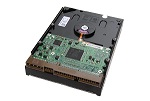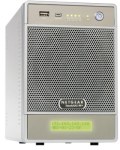
This story comes by way of my brother Mitch…
My brother specializes in database analysis for non-profits. As such, he’s usually very involved in the organizations’ data centers.
One such organization he worked for many years ago had received a grant that included the ability to do a major upgrade to their data center. As part of the upgrade, they had to increase the cooling capacity of the HVAC system in their computer room.
They selected a contractor and had the upgrade installed. They then proceeded with the upgrade their computer systems. Everything was working fine. Until the next day.
They came into the computer room and found that it was over 80℉!
The obvious cause was that the HVAC system hadn’t been sized correctly or was malfunctioning.
The organizations policies required that they had to get 3 quotes before selecting a contractor do any repair work.
So they found 3 contractors. One of the contractors quoted $20,000 to completely replace the existing HVAC system. Another contractor quoted around $10,000 to upgrade the existing HVAC system.
The third contractor came in, looked around the room, picked up a box that was lying on the floor, placed it over the thermostat that was controlling the existing HVAC system, taped it to the wall, and said “No charge”.
Apparently the new HVAC system that had been installed was blowing cold air directly on the thermostat. So, when the system detected that the room was getting warm, it would turn the A/C on. It would immediately detect that the room was cool enough, and turn off the A/C. Clearly the A/C wasn’t running long enough to cool the room at all.
The moral of this story…
Sometimes the solution requires thinking outside the box…
Sometimes the solution requires thinking inside the box…
Sometimes the solution IS the box.
 As some of you may be aware,
As some of you may be aware,  For quite some time I haven’t been happy with the level of data protection on my servers … a while ago I ran mirrored (RAID 1) IDE (PATA) drives on my system using a Arco Duplidisk adapter. It seemed adequate, but after I upgraded my servers to the Dell PowerEdge systems, it didn’t seem to work quite right. It was reporting failed drives when there were none.
For quite some time I haven’t been happy with the level of data protection on my servers … a while ago I ran mirrored (RAID 1) IDE (PATA) drives on my system using a Arco Duplidisk adapter. It seemed adequate, but after I upgraded my servers to the Dell PowerEdge systems, it didn’t seem to work quite right. It was reporting failed drives when there were none.